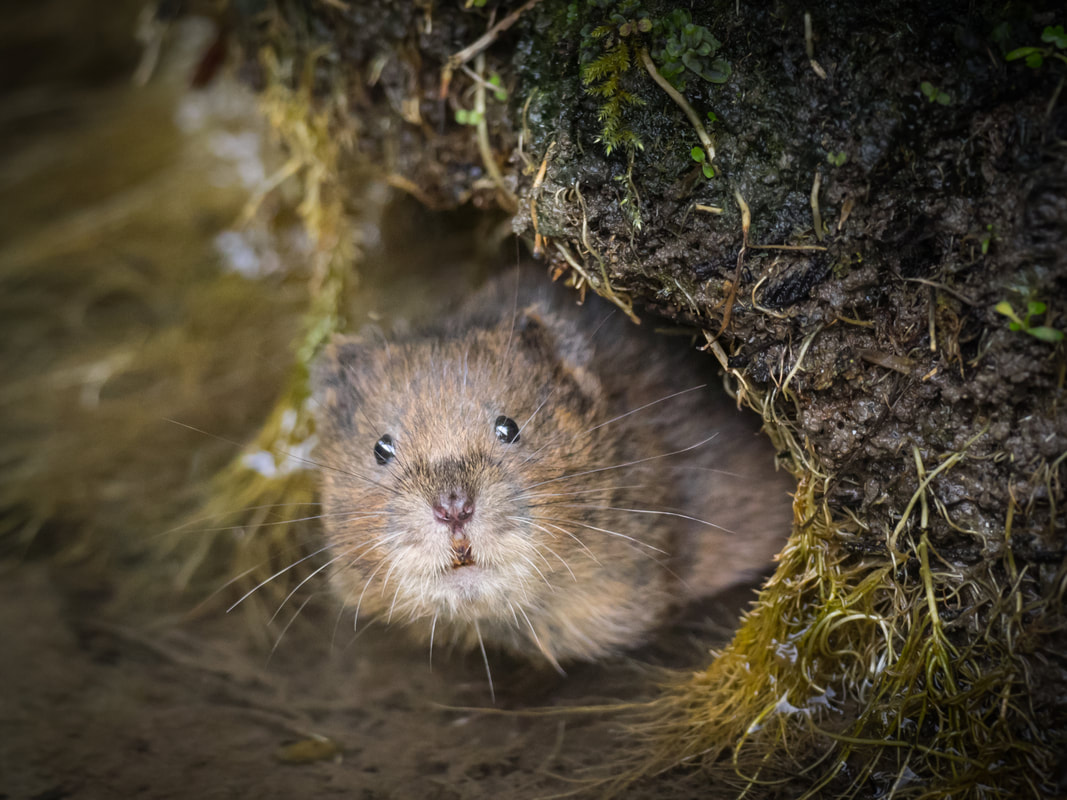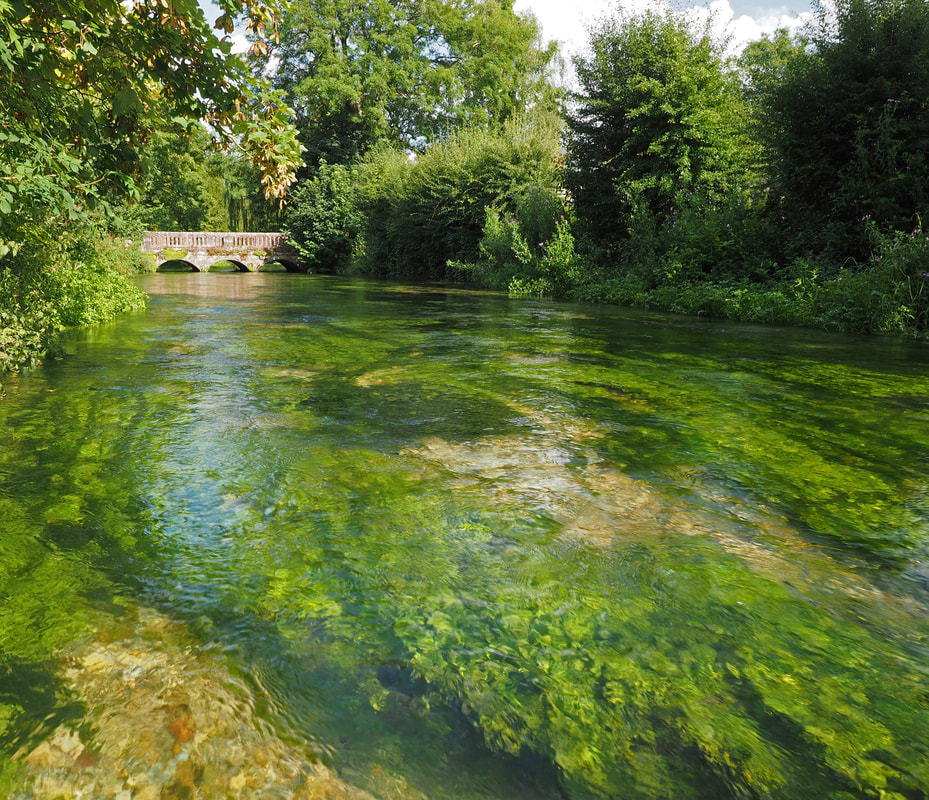|
An important theme of the book is the rich variety of wildlife on the chalk streams and to have images of the typical species to be found there. Most importantly to have images of rare and threatened species. The Water Vole nearly became extinct because of loss of habitat, as a result of modern farming methods and housing development. Mink were also a problem. In recent years the mink problem is much reduced but the main reason there is something of an increase in Water Vole population is the substantial effort of wildlife trusts and similar organisations who have restored and protected suitable habitats and reintroduced Water Voles to these locations. The wildlife trusts monitor the fragile populations with the help of a small army of local volunteers. You may see tethered floats in some of these ditches and channels. These platforms are used by the Water Voles, leaving evidence of their visits.
The Water Vole in the shot here is the result of four 120 mile round trips and the help of Ali Morse (Hampshire & Isle Wight Wildlife Trust) and Elaina Whittaker-Stark (South Downs National Park Authority) who identified the locations of a number of recent sitings. Unfortunately these extremely shy animals are usually seen, if at all, very briefly and therefore the chances of coinciding with my visits with a camera were not good. Pleasant but long hours and many miles lugging camera equipment around the locations was not showing any results at all and I was on my fourth unsuccessful trip and had arranged to meet Elaina for a thank you drink in East Meon. I was a few minutes early so revisited a tiny channel of the Meon chalk stream - more a ditch really - and looked over a low wall to spot a Water Vole peering out of his burrow. I don’t know who was the most surprised! I was able to quickly shoot off a few frames before it disappeared. The resulting shot has just won the runner up prize in the the wildlife category of the South Downs National Park annual photographic competition.
0 Comments
I have started a blog to show the story behind the making of the book "Chalk Streams - A Unique Environment Worth Conserving". I have decided to take all of the photographs myself and has and still is an all absorbing focus over many months, albeit “ on location” only once a week. I suppose it has been a bit of a mission to bring attention to these amazing but fragile and threatened environments. To make a record of these habitats in case they deteriorate in the future - which is quite likely. Most of the photographs have been taken in the last year or so. All have been taken on chalk streams and in water meadows and chalk down valleys. I want all the shots of the wildlife featured in the book to be taken in-situ. In other words in the chalk stream environment, which has been a real challenge as the wildlife don’t appear to order and I live more than an hour and half drive away. The logistics therefore have been a significant factor in producing this book and I have relied on many people for help identifying likely locations for individual target species. More of this later when I give the back story to some of the shots.
|
Story of the bookArchives
November 2020
Categories |
Proudly powered by Weebly


 RSS Feed
RSS Feed